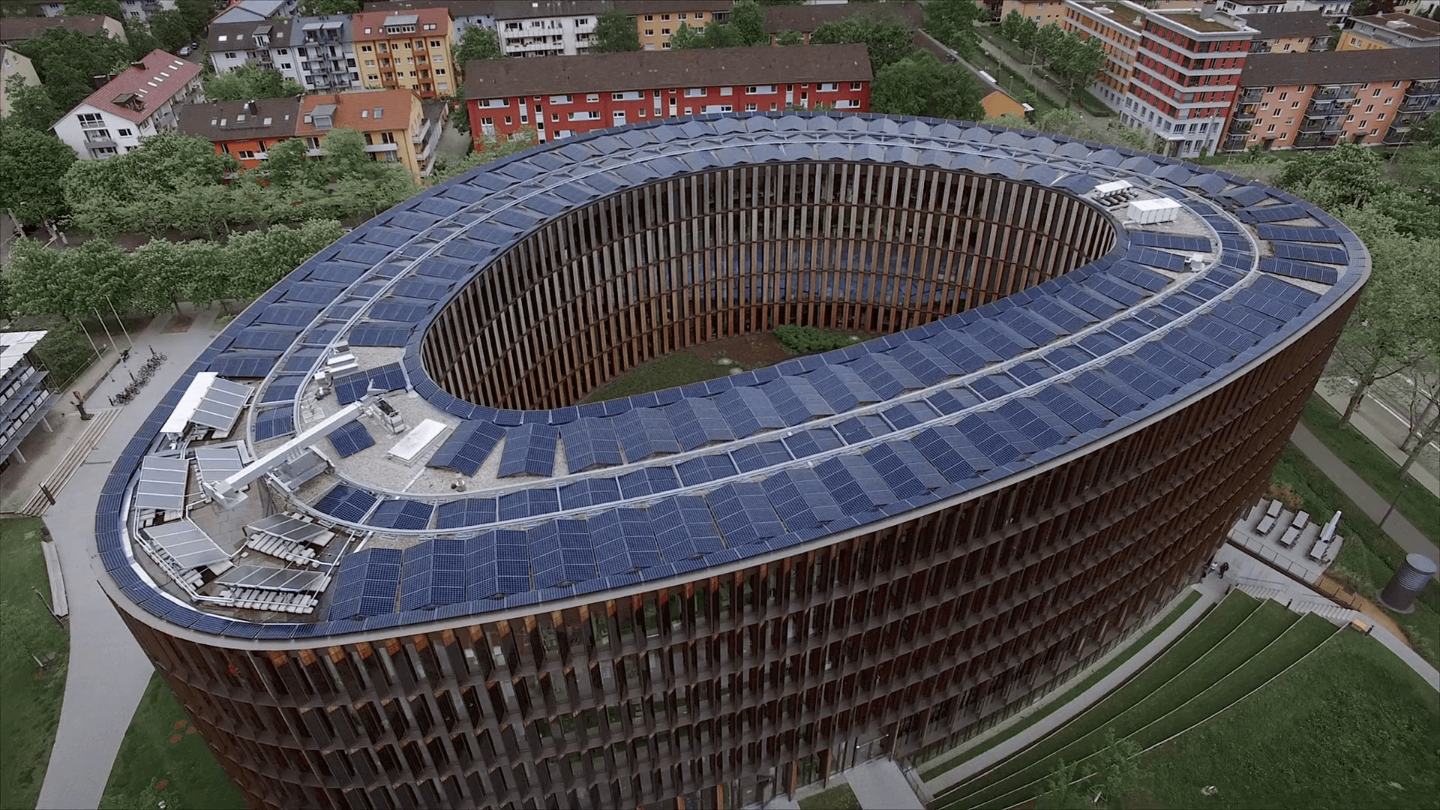Fraunhofer ISE
Monitoring Validates Energy Targets of Freiburg’s New Administration Building “Rathaus im Stühlinger”
After completion in 2017, the city administration building "Rathaus im Stühlinger" in Freiburg was measured and analyzed in detail during the first years of operation. The good news is that the targets set in the planning phase agree with the actual consumption data to a large extent. The building and the building systems are highly efficient. In a yearly balance, the total energy consumption for the building conditioning (heating, ventilation, lighting, domestic hot water heating) is met almost entirely by the renewable energy produced onsite. Thus, the goal of achieving a net zero energy building has been achieved.

The building "Rathaus im Stühlinger" with 22,000 m² of usable floor space comprises the first construction phase of Freiburg’s new administration center. Based on current knowledge, it is Europe's largest zero-energy administrative building. It generates as much energy onsite over the course of the year as it annually consumes in terms of primary energy. The primary energy balance is based on the German Energy Saving Ordinance (EnEV), which was in force at the time of building construction. The ordinance defines the energy required for heating, ventilation, lighting, cooling and domestic hot water heating. The use-dependent energy demand, for example, for office equipment, IT and the cafeteria are not taken into account in the balance. The goal of realizing a future-oriented energy concept with innovative, but lean, building services systems which provide a high comfort level has been achieved.
The administration building is the first of three construction phases in which the City of Freiburg plans to move the various city offices presently distributed around the city to one central location. In summer 2017, 840 employees moved into the new administration building. In November 2017 the citizens' service center opened to the public.
The challenge in achieving a net-zero primary energy balance for large multi-story buildings is that the useful floor area, and thus the energy demand, grows proportionally faster than the roof area which is available for energy generation. This issue was solved for the “Rathaus im Stühlinger" building by using nearly the entire building envelope for energy generation wherever meaningful and possible. In addition to photovoltaics on the roof, the façade area was also used to generate electricity with photovoltaics. These systems are supplemented by photovoltaic-thermal combi-collectors and a gas boiler. The heat supply is based on a low-temperature concept in which groundwater heat pumps are implemented. Heating and cooling are provided by surface systems in the form of concrete core activation in combination with ceiling sails. Cooling is realized almost entirely with environmental energy via a groundwater well. High-temperature heat, used for the provision of hot water for the canteen and the sanitary facilities, is supplied by a solar-thermal assisted gas boiler.
Fraunhofer ISE carried out an intensive monitoring campaign on the building as part of a research project, from the planning phase and implementation up to the first few years of operation. The results from the monitoring data are positive and show that most of the key parameters correspond to the target values established during the planning phase. Especially for new buildings with complex system technology, this is not necessarily a matter of course. Despite the already low consumption values, the targets for the heat consumption were not fully achieved. The share of heat generation from the solar thermal system also lies below the initial expectations. In total, the sum of the primary energy generated and consumed on site is nearly balanced over the course of the year. “For example, in 2018 and 2019 the building consumed about five percent more primary energy than it generated onsite,” says Dr. Peter Engelmann, group head of Building Systems Technology at Fraunhofer ISE. “Despite this margin, the final result can be considered a great success. Freiburg’s new administration building ‘Rathaus im Stühlinger’ impressively demonstrates that a building of this size can meet the requirements for climate neutrality. “
The research project was funded by the German Federal Ministry for Economic Affairs and Energy.